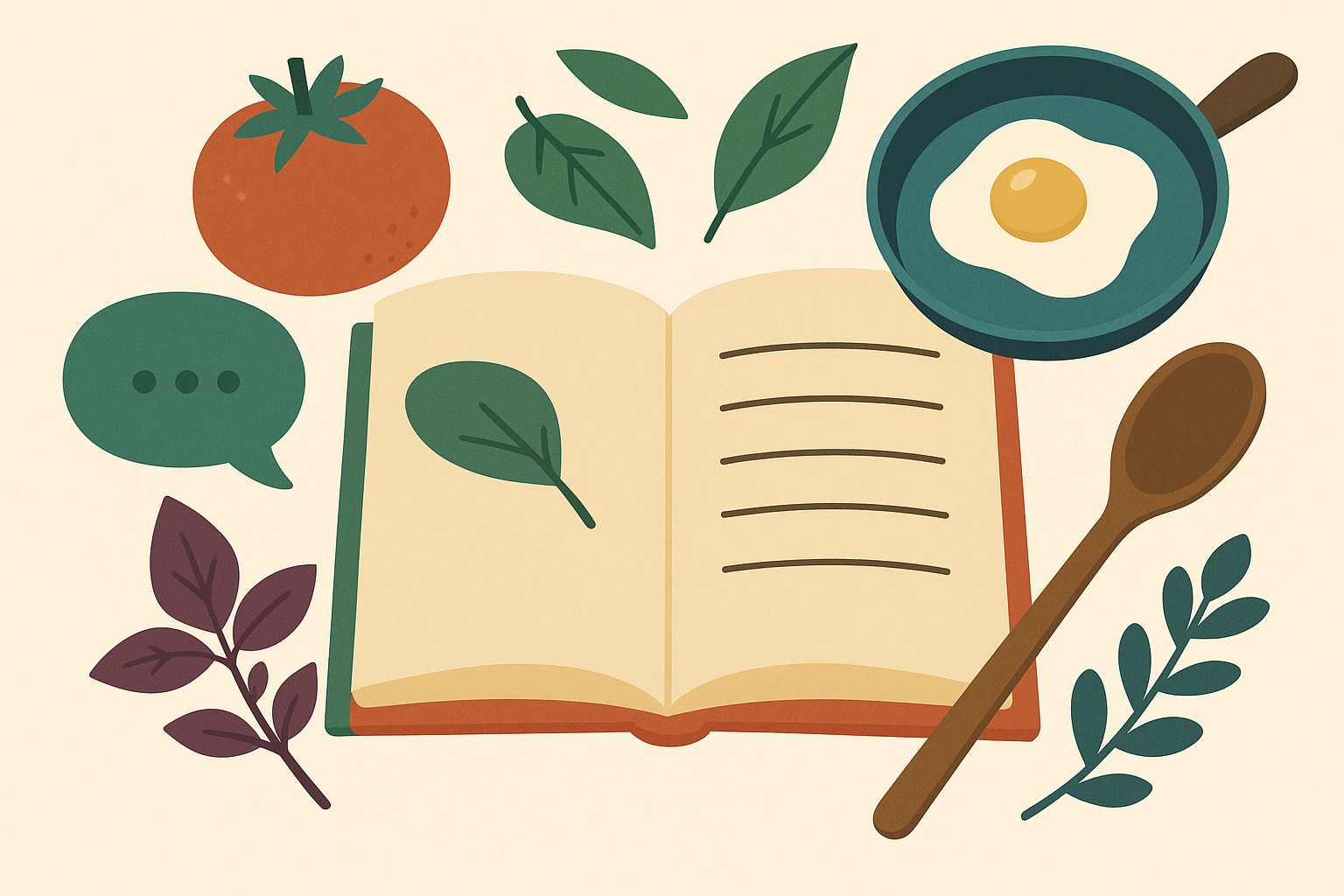
How Stories Come Alive Through Cooking
With every dish served, a story is passed along. It’s not just food that fills the stomach. Every ingredient, every cooking method, and every shared meal bring history back to life. Food and recipes as a storytelling medium show how meals can bridge generations, expressing memories, culture, and emotions that words alone cannot fully capture.
Sometimes, a simple homemade dish brings back childhood memories. A bowl of sinigang may evoke stories of helping in the kitchen while watching a grandmother cook, becoming a part of the family’s rich culinary heritage. Each stir and seasoning carries the love infused into every spoonful.
Food is not only a physical experience—it is emotional and familial. Favorite recipes and each family or culture’s unique cooking methods become part of identity.
Cooking as a Vessel of Culture and Tradition
Every country, town, and family holds its stories within their cuisine. Recipes serve as carriers of culture. In every ingredient and process lies the history of a community.
For example, adobo is more than just a famous dish. It reflects how nature and history influenced cooking methods, embodying the idea of food and recipes as a storytelling medium. The use of vinegar and soy sauce shows how early generations preserved food to ensure survival.
Whether at festivals, weddings, or simple gatherings, traditions revolve around food. Dishes become symbols of identity, unity, and care within every culture.
Recipes as Family Heirlooms
In many families, recipes are passed down from generation to generation. A grandmother teaches her daughter, who then teaches her child. With each passing down comes the family’s origin story and the lessons attached to it.
An example is the secret to the perfect bibingka taught only during Christmas. As the proper cooking time is explained, the family’s humble beginnings from a small market stall are also shared.
It’s not just the recipe that’s passed on, but also the spirit of perseverance, love, and hope. Each time the recipe is followed, it’s as if previous generations continue to participate in the present.
The Stories Behind Every Ingredient
Each ingredient used in cooking carries its own origin and tale. Whether buying fresh vegetables at the market or growing herbs in the backyard, the journey of food is chronicled even before it reaches the plate.
For instance, coconuts harvested from the backyard bring childhood memories of siblings climbing trees together. Every seasoning is not just for flavor but pieces of life that add depth to every dish.
Understanding the ingredients helps pass on love for food. The story becomes complete as nature, family, and tradition come together in every combination of flavors.
The Kitchen as the Stage for Stories
The kitchen is not just a place for cooking; it is a stage where many family stories unfold. Conversations, laughter, tears, and moments of collaboration happen here.
While preparing menudo for guests, a mother and daughter might share dreams and hopes. As the meat and vegetables simmer, stories of love, failure, and success simmer along with them.
With every stir of the spoon and arrangement of the table, dreams and togetherness revolve around the family. Every scent and sound in the kitchen carries memories of moments that bonded everyone together.
Recipes as Personal Stories of Change
Some recipes are born from personal experience and experimentation. Sometimes, due to necessity or limited ingredients, people invent their own ways of cooking.
An example is a mother who learned to make her own version of spaghetti with whatever ingredients they could afford. Through trial and error, she created a taste that her family grew to love.
These recipes become personal stories of creativity, resourcefulness, and love. They are not merely meals but products of struggles and victories faced by the cook.
Cooking as Therapy and Healing
Sometimes, cooking becomes a way to heal. In moments of sadness, failure, or stress, preparing food becomes a form of emotional comfort.
For example, when someone cooks their late mother’s favorite tinola, they feel her presence again. The aroma of ginger and onions becomes a comforting embrace of memory.
Following the recipe steps becomes a ritual that helps settle emotions. As ingredients are prepared, the heart also finds a way to sort through overwhelming feelings.
Sharing Recipes on Social Media as Storytelling
In the age of social media, personal stories are shared more widely through food. Recipes are no longer just lists of ingredients and instructions but are paired with photos and personal anecdotes.
You’ll see videos of grandfathers teaching grandchildren how to make lumpia, or vlogs documenting family journeys to taste various versions of adobo in different provinces.
Each post isn’t just about the recipe—it connects personal stories and culture, shared not only within families but with viewers and readers everywhere.
Food as a Bridge Across Generations
Food and recipes serve as bridges that connect different generations of a family. Every shared meal becomes a moment to pass on the memories of previous generations.
As a grandmother teaches the perfect seasoning for nilaga, grandchildren not only learn the technique but also their family’s history and roots. In this way, culture isn’t just something found in books—it’s lived out daily.
Simple meals become the ongoing thread of family unity, even as time passes and the world changes.
How Stories Live in Every Dish
Food and recipes carry far more than flavor—they embody the rich tapestry of human experience. Every ingredient chosen, every step in preparation, and every shared meal holds fragments of life’s journey: stories of love, resilience, hardship, and triumph woven into each bite. Behind each family recipe lies a narrative of ancestors who adapted, created, and preserved their culinary traditions, turning simple meals into powerful reflections of cultural identity and personal legacy.
This is why even the most humble dishes—like a plate of fried fish or a pot of chicken adobo—hold deep significance when placed on the family table. They are not merely meals to satisfy hunger but are symbols of togetherness, endurance, and continuity. These familiar recipes evoke childhood memories, echo the voices of loved ones who once prepared them, and offer comfort in their familiarity. Every bite becomes a silent retelling of shared experiences, making the meal not only nourishing but profoundly meaningful.
Through this intimate connection, memories are preserved and renewed with every serving. The act of cooking and eating becomes a living tribute to those who came before, keeping their stories alive in the present. In passing down recipes and sharing meals, families ensure that their history does not fade but continues to thrive, allowing each new generation to taste, remember, and carry forward the enduring stories embedded in every dish—truly embracing food and recipes as a storytelling medium.
